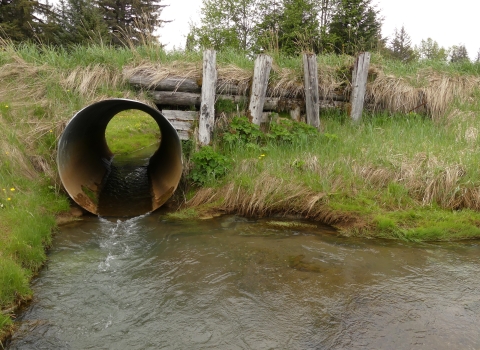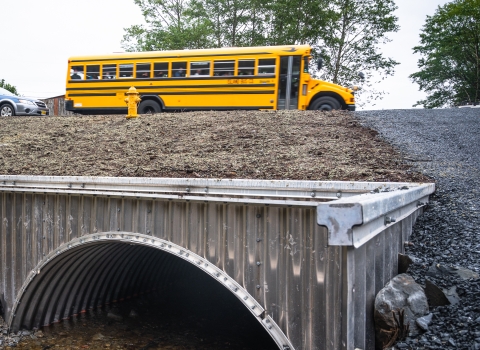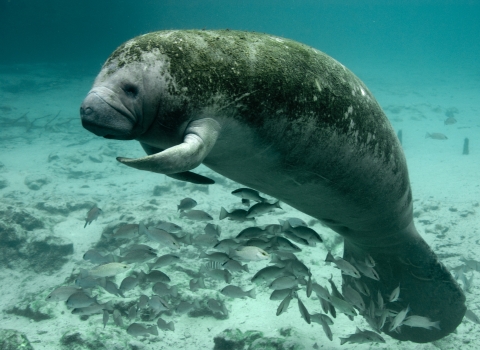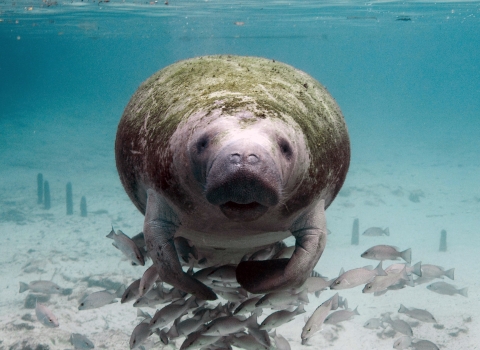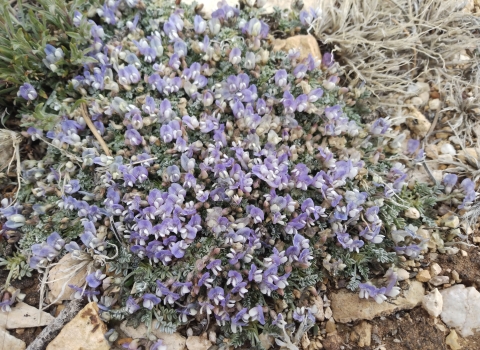Three fish passage fish passage
Fish passage is the ability of fish or other aquatic species to move freely throughout their life to find food, reproduce, and complete their natural migration cycles. Millions of barriers to fish passage across the country are fragmenting habitat and leading to species declines. The U.S. Fish and Wildlife Service's National Fish Passage Program is working to reconnect watersheds to benefit both wildlife and people.
Learn more about fish passage projects in Alaska will receive more than $3.5 million in fiscal year 2022 funding from President Biden’s Bipartisan Infrastructure Law Bipartisan Infrastructure Law
The Bipartisan Infrastructure Law (BIL) is a once-in-a-generation investment in the nation’s infrastructure and economic competitiveness. We were directly appropriated $455 million over five years in BIL funds for programs related to the President’s America the Beautiful initiative.
Learn more about Bipartisan Infrastructure Law . The projects are located in the Valdez-Cordova Borough, Tyonek and Gustavus. The National Fish Passage Program, facilitated by the U.S. Fish and Wildlife Service, supports aquatic ecosystem restoration projects and restores free-flowing waters, allowing for enhanced fish migration and protecting communities from flooding.
Today’s news locally amplifies a national announcement of 40 fish passage projects in 23 states and Puerto Rico that will receive a total of nearly $38 million in fiscal year 2022 funding from President Biden’s Bipartisan Infrastructure Law. The funds will bolster efforts to address outdated, unsafe or obsolete dams, culverts, levees and other barriers fragmenting our nation’s rivers and streams, which will help restore fish passages and aquatic connectivity.
“Across the country, millions of barriers block fish migration and put communities at higher risk of flooding,” said Secretary Deb Haaland. “President Biden’s Bipartisan Infrastructure Law provides a once-in-a-generation opportunity to invest in our nation’s rivers, streams and communities and help restore habitat connectivity for aquatic species around the country."
A number of the projects receiving funding nationally will directly address issues related to climate change climate change
Climate change includes both global warming driven by human-induced emissions of greenhouse gases and the resulting large-scale shifts in weather patterns. Though there have been previous periods of climatic change, since the mid-20th century humans have had an unprecedented impact on Earth's climate system and caused change on a global scale.
Learn more about climate change and serve disadvantaged communities, while also spanning the nation geographically and addressing a wide array of diverse aquatic resource issues.
“Aquatic restoration projects funding by the Bipartisan Infrastructure Law are important examples of how nature-based projects can enable ecosystems and communities to be more resilient to climate change,” said Service Director Martha Williams. “In addition to providing benefits for fish and aquatic species, the National Fish Passage Program’s work to restore degraded and fragmented aquatic habitats decreases public safety hazards, improves infrastructure resilience, and creates jobs, stimulating the local economy.” The National Fish Passage Program has decades of proven experience implementing infrastructure projects with partners to improve the health of the nation’s waterways, reconnect rivers, improve climate resilience, and enhance local economies. The program provides financial, engineering and planning assistance to communities, Tribes and landowners to help remove barriers and restore rivers for the benefit of fish and people.
For more information about the National Fish Passage Program and the BIL-funded projects, please visit the Service’s Fish Passage Program website.
Enhancing wildlife corridors and habitat connectivity, including fish passage, is an early focus of the Biden-Harris administration’s America the Beautifulinitiative. Today’s announcement comes on the heels of Monday’s launch of a separate $1 billion America the Beautiful Challenge that will leverage federal conservation and restoration investments with private and philanthropic contributions to accelerate locally led land, water and wildlife conservation efforts across the country.

